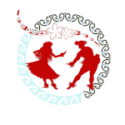Coco Hotahota, an esteemed figure in the world of Polynesian dance, has been an enduring symbol of cultural preservation and artistic innovation. His contributions have not only enriched the dance heritage of Tahiti but have also propelled the traditional art form onto the global stage. This article delves into the life, achievements, and legacy of Coco Hotahota, exploring his impact on Polynesian dance and culture.
Early Life and Introduction to Dance

Coco Hotahota was born in the picturesque island of Tahiti, a place renowned for its vibrant culture and deep-rooted traditions. Growing up in this environment, he was naturally inclined towards the rich artistic expressions of his homeland. Tahitian dance, or ‘Ori Tahiti, was an integral part of his upbringing. It was more than just a form of entertainment; it was a vital component of the community’s social and spiritual fabric.
From a young age, Coco demonstrated an exceptional talent for dance. His early exposure to the traditional performances during cultural ceremonies and festivals ignited a passion that would shape his future. Under the guidance of local dance masters, he honed his skills, mastering the intricate movements and rhythms that define ‘Ori Tahiti.
Formation of Te Maeva

In 1962, Coco Hotahota founded Te Maeva, a dance troupe that would become synonymous with excellence in Tahitian dance. The name “Te Maeva” translates to “welcome” or “celebration” in Tahitian, reflecting the group’s mission to celebrate and share their cultural heritage. Under Coco’s visionary leadership, Te Maeva quickly gained a reputation for its high-caliber performances and innovative choreography.
Coco’s approach to dance was both reverent and revolutionary. While deeply respectful of traditional forms, he was not afraid to experiment and innovate. He introduced new elements into performances, blending classical dance techniques with contemporary influences. This fusion created a unique style that resonated with audiences, both locally and internationally.
Artistic Philosophy and Contributions

Coco Hotahota’s artistic philosophy was rooted in a profound respect for Tahitian culture. He viewed dance as a living tradition that should evolve while maintaining its core essence. His choreography often drew inspiration from ancient legends, natural beauty, and everyday life in Tahiti. Through his work, he sought to convey the stories, emotions, and spirituality of his people.
One of Coco’s significant contributions was his emphasis on storytelling through dance. Each performance by Te Maeva was a narrative journey, weaving together movements, music, and costumes to create a compelling tale. This narrative approach not only captivated audiences but also educated them about Tahitian culture and history.
International Recognition
Coco Hotahota’s impact extended far beyond the shores of Tahiti. Under his leadership, Te Maeva embarked on numerous international tours, bringing the beauty and vibrancy of Tahitian dance to audiences around the world. The troupe’s performances at prestigious cultural festivals and events garnered widespread acclaim, earning them a dedicated following and numerous accolades.
Coco’s ability to bridge cultural gaps through dance was instrumental in promoting cross-cultural understanding. He used his platform to advocate for the recognition and appreciation of Polynesian arts, helping to dispel stereotypes and misconceptions. His efforts played a crucial role in positioning Tahitian dance as a respected and celebrated art form on the global stage.
Preservation and Education
Beyond his role as a performer and choreographer, Coco Hotahota was a passionate advocate for the preservation of Polynesian dance traditions. He understood the importance of passing on knowledge to future generations, ensuring that the cultural legacy would endure. Through workshops, training programs, and educational initiatives, he dedicated himself to teaching young dancers the techniques and values of ‘Ori Tahiti.
Coco’s commitment to education extended to his involvement in various cultural institutions and organizations. He collaborated with local and international entities to promote research, documentation, and preservation of Polynesian dance. His efforts helped create a sustainable framework for the continued growth and development of the art form.
Legacy and Impact
Coco Hotahota’s legacy is etched in the hearts of those who had the privilege of witnessing his artistry and learning from his wisdom. His contributions have left an indelible mark on Polynesian dance, inspiring countless dancers, choreographers, and cultural enthusiasts. Through his work with Te Maeva, he demonstrated the power of dance as a medium for cultural expression, storytelling, and connection.
Coco’s influence can be seen in the numerous dance troupes and performers who continue to draw inspiration from his innovative style and dedication to tradition. His vision has paved the way for a new generation of artists who are committed to preserving and evolving Tahitian dance. The annual Heiva i Tahiti, a major cultural festival in Tahiti, stands as a testament to his impact, showcasing the vibrancy and diversity of Polynesian performing arts.
Conclusion
Coco Hotahota’s journey as a dancer, choreographer, and cultural ambassador has been nothing short of extraordinary. His unwavering commitment to his heritage and his innovative spirit have enriched the world of Polynesian dance, ensuring its relevance and vitality in the modern era. As we celebrate his life and achievements, we are reminded of the profound impact that one individual’s passion and vision can have on preserving and promoting cultural heritage. Coco Hotahota’s legacy will continue to inspire and resonate for generations to come, a true testament to the enduring power of art and culture.
